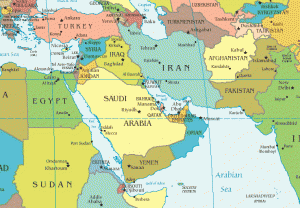The World Health Organization (WHO) released an update on Middle East respiratory syndrome coronavirus (MERS-CoV) infections between 18 and 26 October 2014 in Saudi Arabia.

During this time frame, the National IHR Focal Point of Saudi Arabia (KSA) notified WHO of 12 additional cases of MERS-CoV infection, including five deaths.
The dozen cases are from Taif (6), Riyadh (4), Madinah (1) and Skaka (1). The median age of the patients is 54 years old (ranging from 17 to 75 years old). Nine cases (75%) are men and ten (83%) are Saudi nationals. Ten patients (83%) suffer from one or more comorbidities. None of the cases has a history of contact with camels nor of raw camel products consumption; however, two of the patients (17%) live in areas densely populated with camels. In the 14 days that preceded the onset of symptoms, none of the cases performed Umrah/Hajj and only two (17%) travelled out of their cities of residence. Eight patients (67%) came in contact with laboratory-confirmed MERS-CoV cases.
This is just part of the picture in Saudi Arabia as Avian Flu Diary blogger, Mike Coston aptly points out–Since that cutoff date (Oct. 26), we’ve seen 14 additional cases announced out of KSA.
Globally, WHO has been notified of 897 laboratory-confirmed cases of infection with MERS-CoV, including at least 325 related deaths.


Thanks for sharing good post. During this time frame, the National IHR Focal Point of Saudi Arabia (KSA) notified WHO of 12 additional cases of MERS-CoV infection, including five deaths.
Relax! – I got the power (and everybody can possess it) to destroy the MERS-CoV, to curb the Saudi Arabian and the global pandemics and to erase any diseases from the face of the Earth in a matter of days – Any threat worldwide will be completely avoided, once everybody (kids and adults) start doing my discovery (the greatest one of all time on Earth and maybe in the Universe) – The WVCD – The Weapon of Virus and Cancer Destruction – By far more powerful than the human immune system, keeping it intact all the time, for any pathogens are killed the moment they touch us – Just an exercise for a minute a day – The cure and prevention of any diseases, known on Earth for millions of years – Infections, Cancers, Diabetes, MS, Alzheimer’s, Parkinson’s Disease, Cardiovascular Diseases and Strokes – Even Tibetans and Yoga don’t know how to stay absolutely healthy all the time – Everybody (kids and adults) will stay absolutely healthy all the time, for the WVCD supplies every cell of our bodies with enough oxygen, that kills any pathogens the moment they touch us and prevents us from any diseases – The price of the WVCD for the whole world is 5 billion EURO – Just 25 million EURO per country – Can be paid to me by the governments of all countries in the world – Then everybody (kids and adults) will know how to stay absolutely healthy all the time – Never getting sick of any diseases even for a second.
Nice post , thank you for sharing this blog.